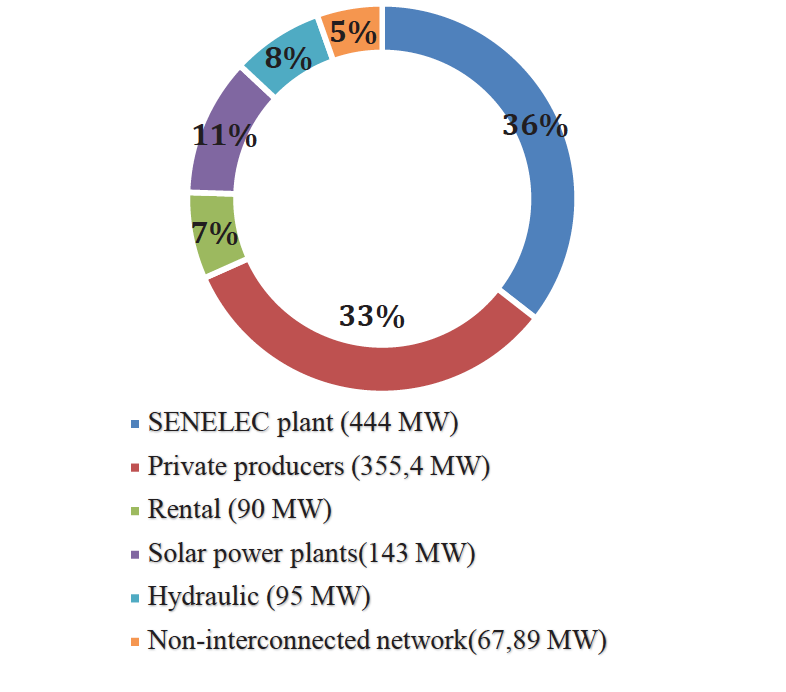Energy situation of Senegal : sub-sector of electricity
- Post by: SOAPHYS-KZ
- 31 mars 2021
- Comments off


http://dx.doi.org/10.46411/jpsoaphys.2020.01.06
Section de la parution: Information de publication
J. P. Soaphys, Vol 2, N°1 (2020) C20A06; 10 Mars 2021
Pages : C20A06-1 à C20A06-6
Information sur les auteur
Sène Diatta *,
Sarr Adama,
Ndiaye Mouhamadou Falilou
Affiliation
1 École Supérieur Polytechnique, Université Cheikh Anta Diop, BP 5085, Dakar, Sénnégal
*To whom correspondances should be addressed. E-mail: diattasene88@gmail.com
Senegal’s energy consumption is dominated by oil products and biomass. The electricity sub-sector, which accounts for only 10.4% of total energy consumption, far behind biomass 41.6% and oil products 39.2%, is remains dominated by thermal units. The objective of this study is to do an analysis of the electricity sub-sector. It shows a dependence on imports of oil and gas to meet our demand. Important policies have been developed to think about energy independence by exploiting our renewable energies potential, 5kWh / m² / day for solar, average wind speed estimated at 4m / s for wind. The liberalization of the energy market has allowed public and private investors to invest in this sector. The installed capacity has enabled Senegal to avoid the emission of 156.243 tons of CO2 per year with the six solar photovoltaic plants. Despite immense potential of renewable energies, their rate remains low in the power park and is estimated for (solar photovoltaic, wind and hydraulic) at 28 % in 2020.
Keywords : Energy, Electricity, Power Plant, Senegal , Solar, Wind and Hydraulic
Tchanche, B., Diaw, I, 2017. Analyse énergétique du secteur des transports du Sénégal, Conférence Ouest Africaine sur les Energies Renouvelables, Saint Louis (2017), 1-5.
Report, 2015. Plan d’Actions National des Energies Renouvelables (PANER) SENEGAL Période [2015-9+4442020/2030], 08.
Report, 2018. Réalisation d’une revue documentaire sur l’énergie solaire en Afrique de l’Ouest (zone UEMOA) et organisation d’un concours startup. 46 – 50.
PNER (National Program of Rural Electrification) du Sénégal, 2020. Projet d’Electrification Rurale par Mini-réseaux solaires de 1000 villages répartis dans sept (07) régions du SENEGAL, 13.
Report annual 2018. Senelec.
CRSE (Commission of Regulation of Electricity Sector), 2019. Révision des conditions tarifaires de Senelec 2020-2022, 22.

